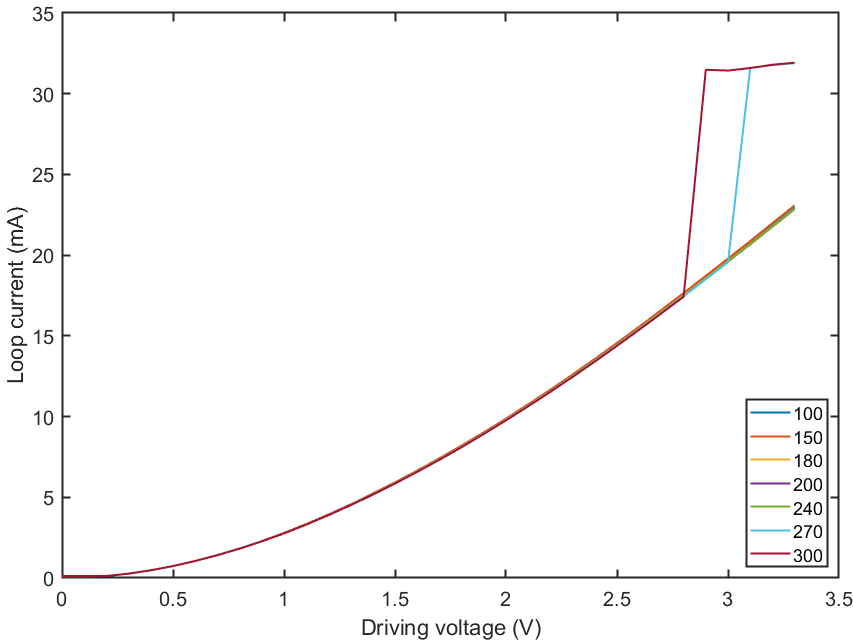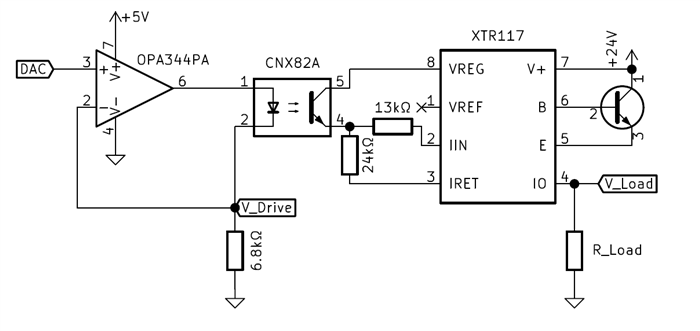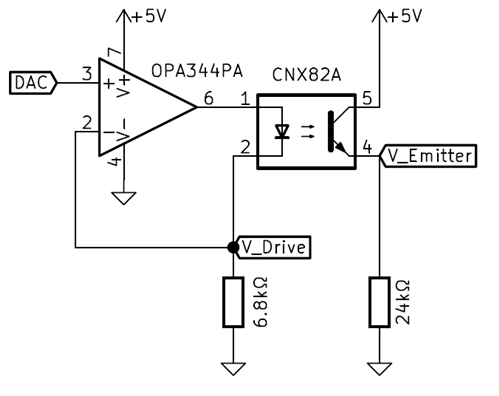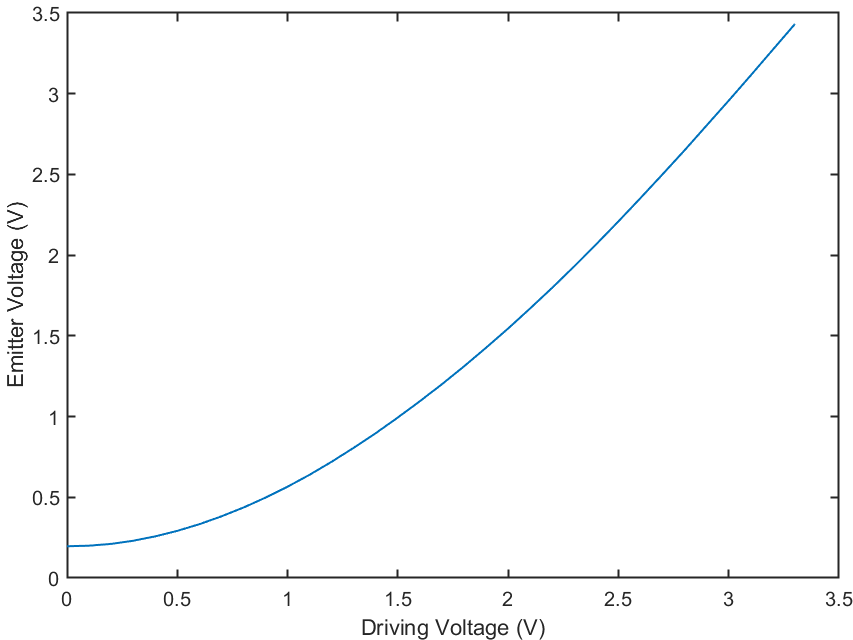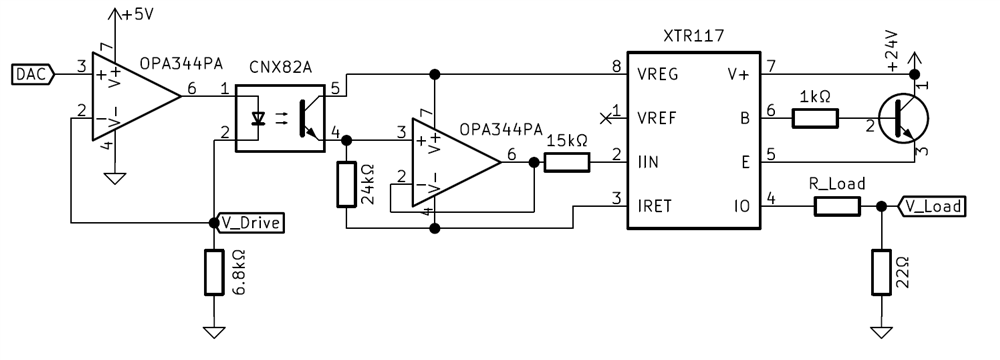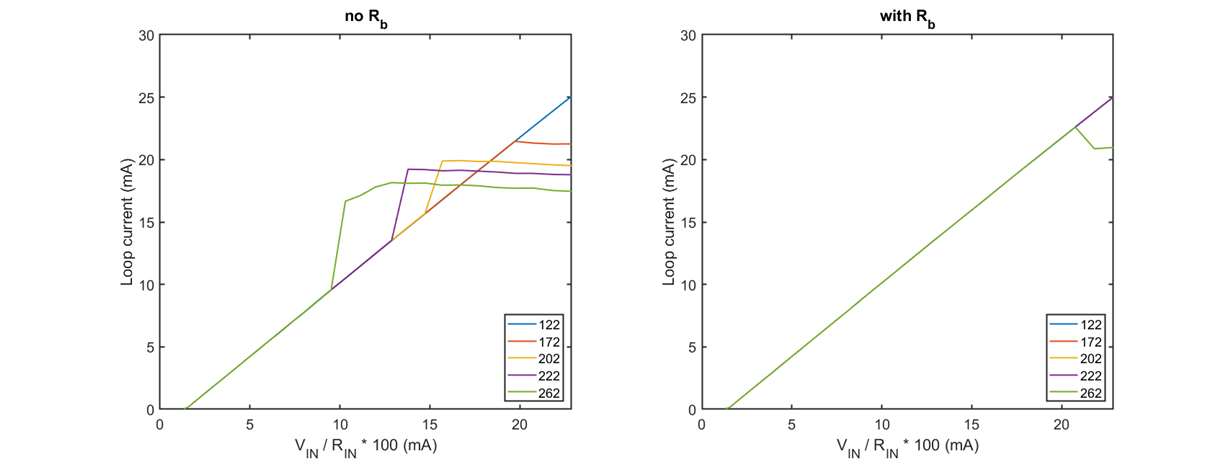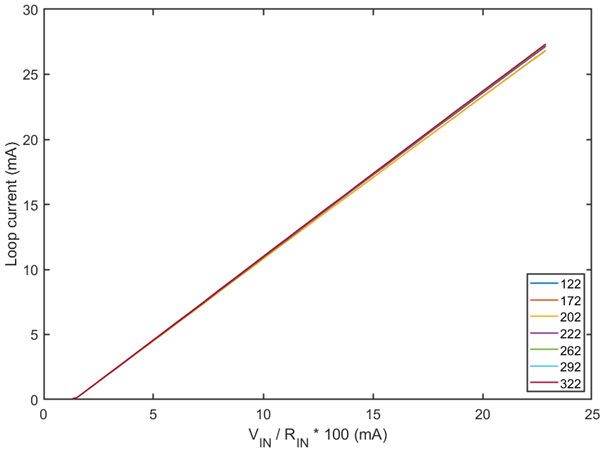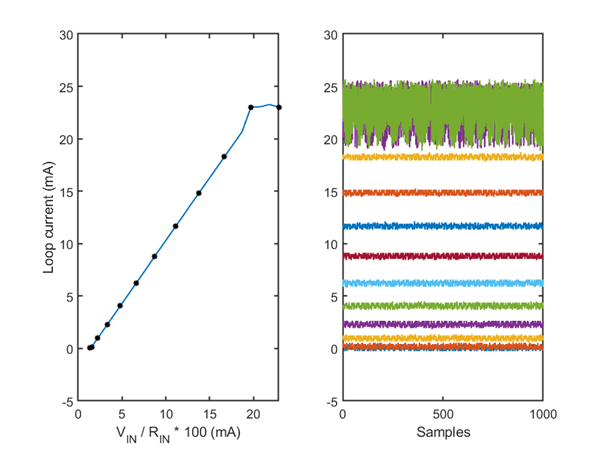Other Parts Discussed in Thread: OPA344
Hi,
I have exactly the same circuit described in the thread "XTR117: Interface a XTR117 with a Photo Transistor and a MCU".
In my design, the phototransistor is just part of the optocoupler CNX82A that I am using to decouple the XTR117 from the control circuit.
The problem is that the current driver does not work for loop load exceeding 250 ohm and the XTR117 datasheet does not report any limit, neither any derating curve depending on the load.
The results of my characterization are reported in the figure above.
At the current design stage, the control is not linear, but this was intended to be just a test and as you can see this is not my main concern.
I performed the same test under the following conditions but no improvement was detected
- test under different power supply conditions up to 36V
- test with different resistor values
- test with different NPN BJT, N-MOS
As soon as the current output switch to the saturating value, no action on the input can restore the normal operation.
Are there some considerations that I am missing?



